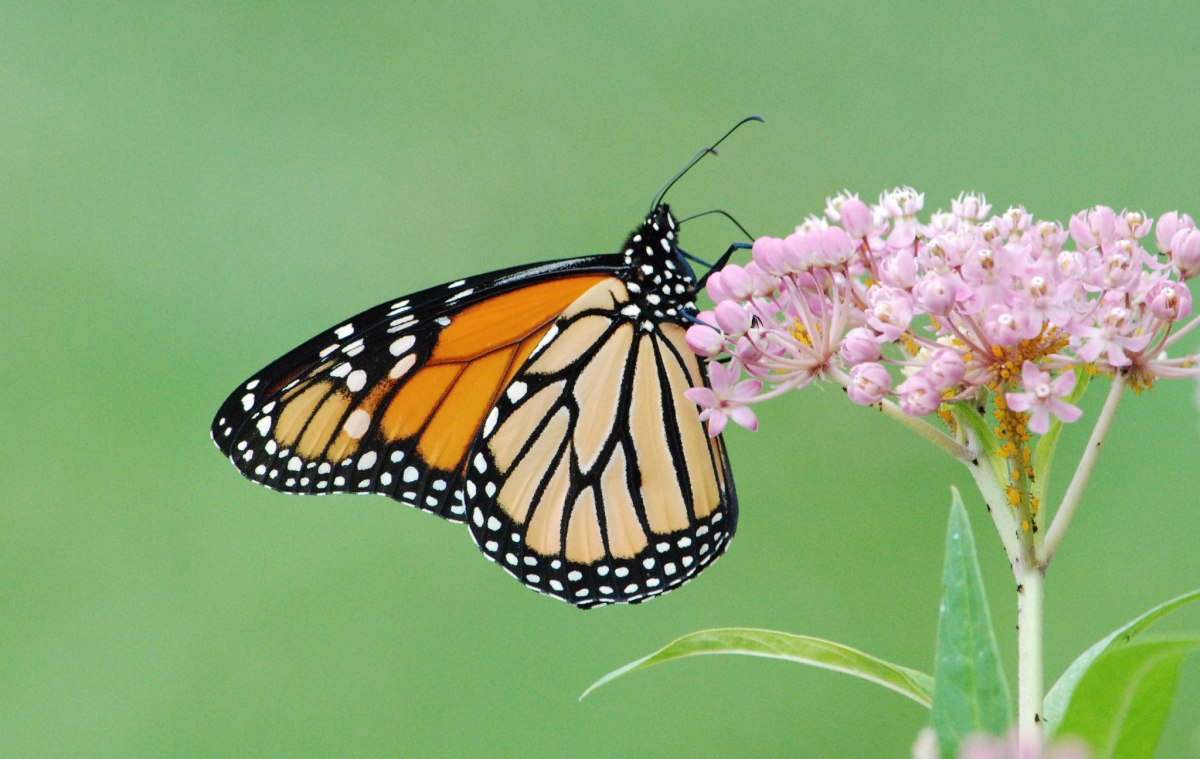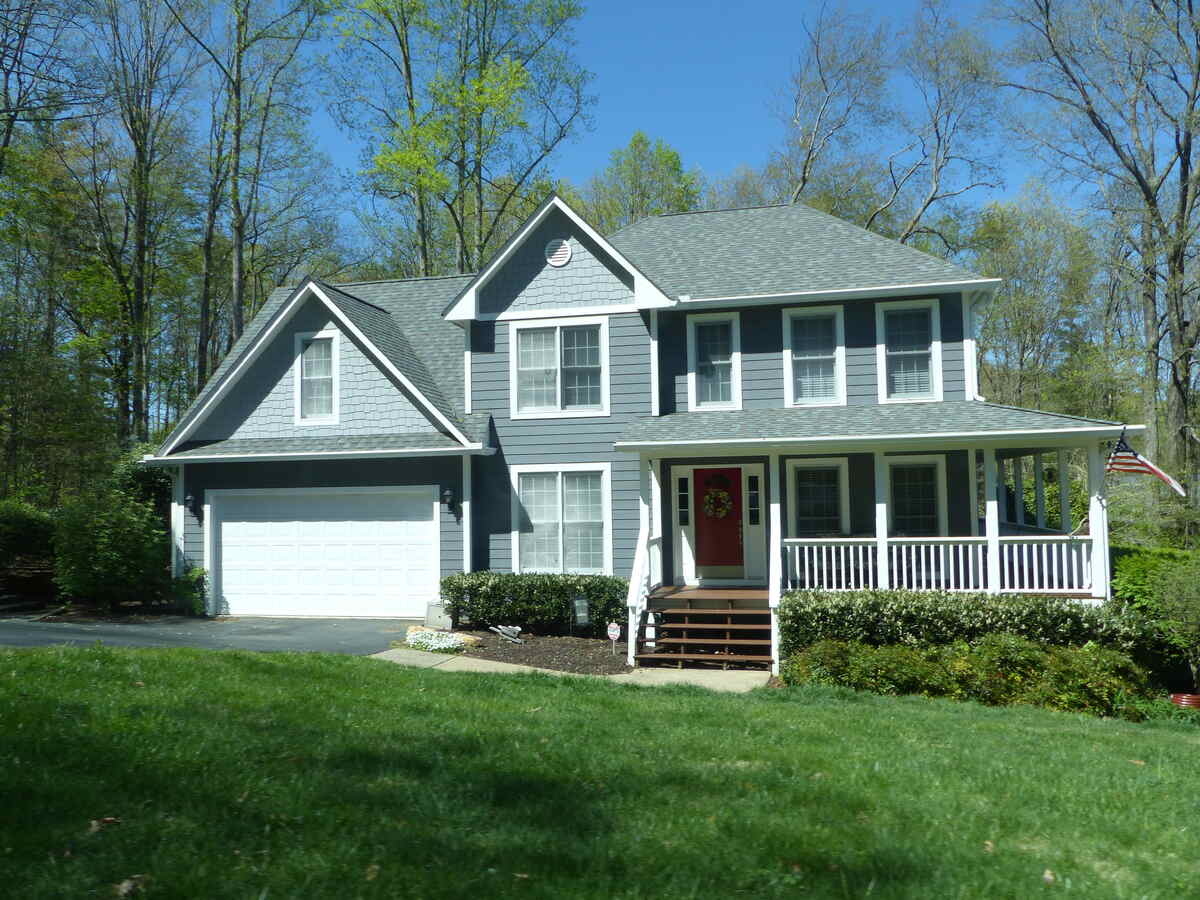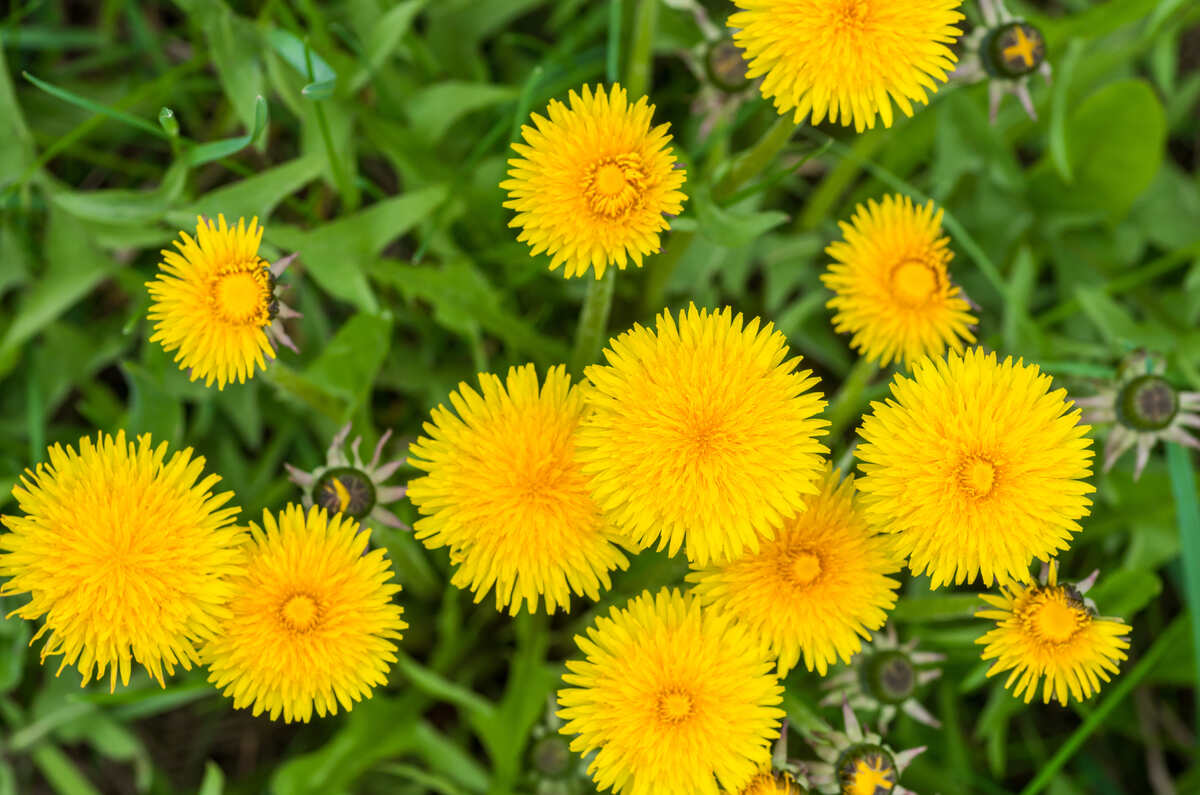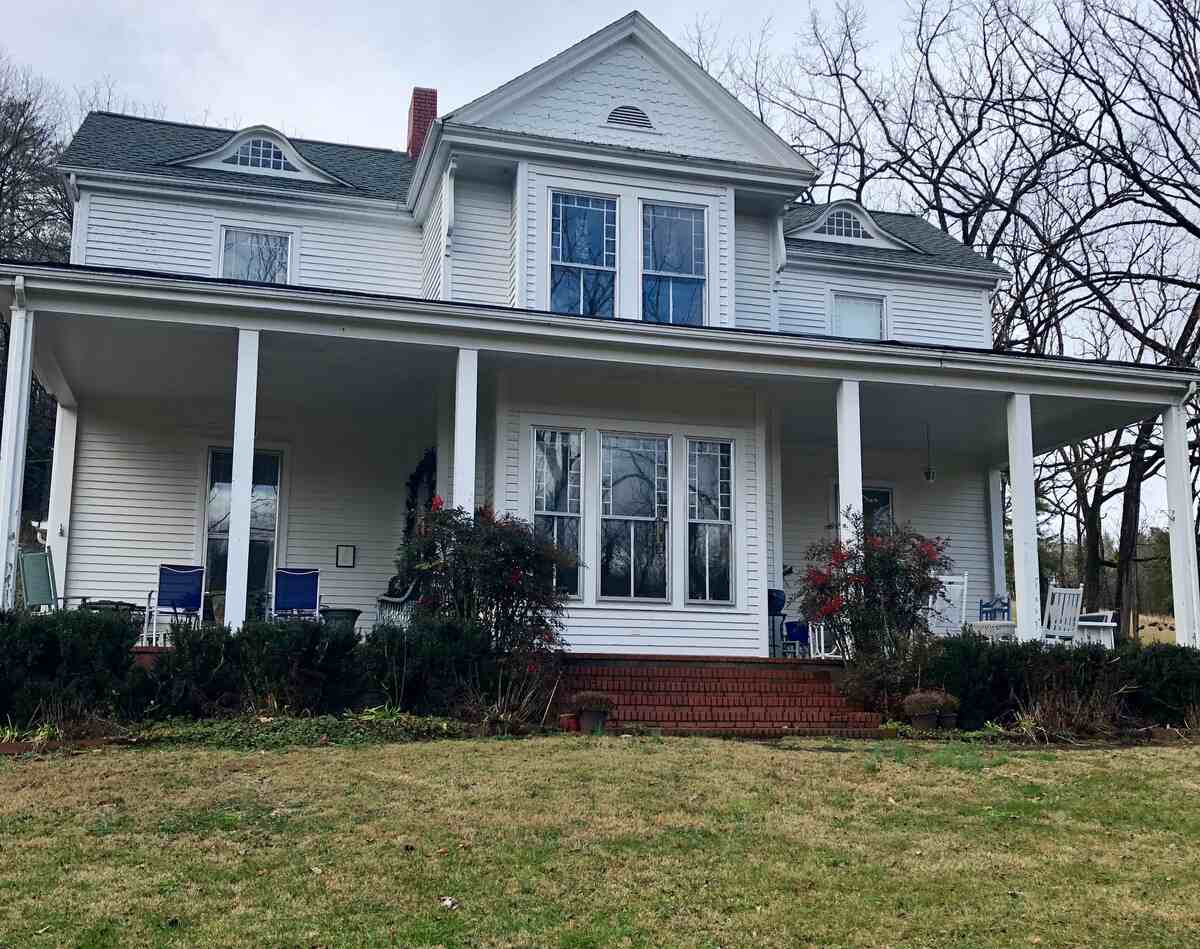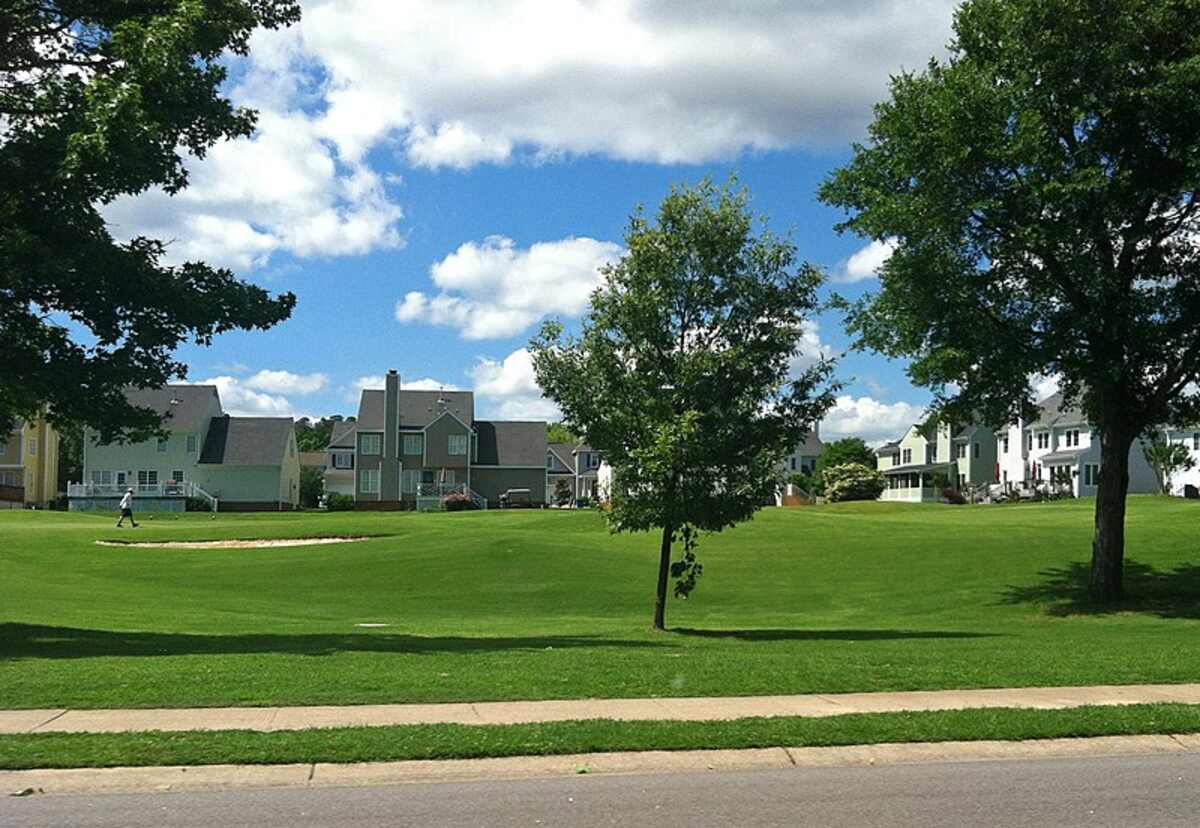
Which are the best grass types for Raleigh, NC? Well, that’s a meaty question. If the United States were a hamburger, Raleigh, NC, would be the beef between two buns — one bun representing the North (where only cool-season grasses grow), the other bun representing the South (where only warm-season grasses thrive).
Raleigh sits in the “beefy” middle, the transitional weather zone in the Piedmont Triad of North Carolina. Since this transitional zone supports both cool-season and warm-season grass, it creates many grass options for homeowners. We’ll help you digest this conundrum and choose the best grass type (or types) for your Raleigh lawn.
This article will explore the eight best grass types for Raleigh:
If you’re looking for a short guide, we’ve included an overview at the end on how to choose the best grass type for your Raleigh lawn.
Interesting Fact: The Piedmont region of North Carolina, where Raleigh is located, is found along a rolling plateau between the eastern Coastal Plain and the mountains in the west. This unique topography earned the region its name (piedmont is French for “foot of the mountain”).
Unlike the mountain region, the elevation in the Piedmont doesn’t vary as much, providing ideal conditions for both warm- and cool-season grasses to grow and flourish.
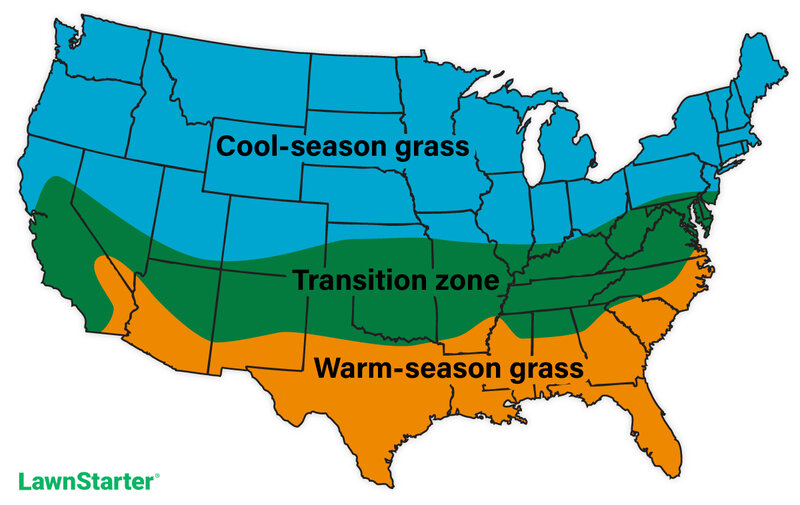
4 Cool-Season Grasses
Grasses that thrive in cooler temperatures are known as cool-season grasses. These grasses experience peak growth during the early spring and fall months when temperatures range from 55 to 75 degrees Fahrenheit. However, these grasses may become dormant during summer or grow less actively.
Fine Fescues (Festuca sp.)
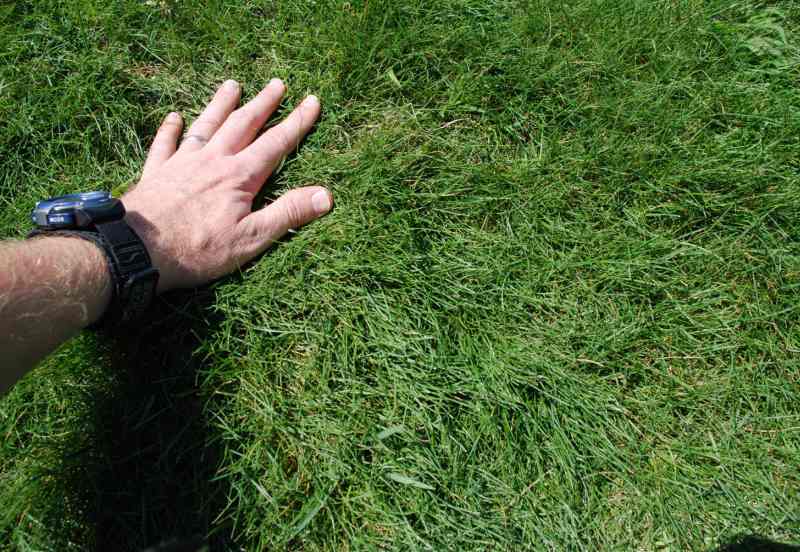
Aaron J. Patton, Ph.D. / Turfgrass Extension Specialist at Purdue University
If you are looking for grasses that can withstand shade, drought, and poor soil conditions, look no further than fine fescues. These grasses get their name from their very fine leaves, which are almost as thin as pine needles. Be wary of planting fine fescue seed in sunny locations exposed to high temperatures or areas with high soil moisture or heavy foot traffic.
- Classification: Cool-season grass
- Spreads by: Fine fescues are bunch-type grasses
- Shade tolerance: Moderate to High, depending on species
- Drought tolerance: Moderate to High, depending on species
- Foot traffic tolerance: Low to Moderate, depending on species
- Maintenance needs: Low fertilizer and mowing needs
- Mowing height: Set mowing height between 2.5 and 4 inches, depending on species.
- Potential for disease: Moderate. Common diseases include red thread, leaf spot, dollar spot, summer patch, and powdery mildew.
- Soil pH: 6-6.5
- Soil type: The grass tolerates infertile and sandy soils. Will perform poorly in wet soil conditions. Prefers drier soils.
Other notes: Fine fescue is often mixed with Kentucky bluegrass when planted in shade or for a low-maintenance lawn. This is because fine fescue loves shade, and Kentucky bluegrass is a sun worshipper. Also, fine fescue has a bunch-type habit and doesn’t spread. This combination of these two grasses makes a great-looking, healthy lawn.
Grass Seed Options:
– Outsidepride Legacy Fine Fescue Grass Seed (5 lbs.)
– Eretz Creeping Red Fine Fescue Seed (choose your size)
– Outsidepride Creeping Red Fine Fescue Grass Seed (25 lbs.)
– Outsidepride Hard Fine Fescue Grass Seed (10 lbs.)
Tall Fescue (Festuca arundinacea)

Aaron J. Patton, Ph.D. / Turfgrass Extension Specialist at Purdue University
This cool-season grass is a popular choice for lawns in the transition zone due to its ability to withstand heat, cold, and drought. Tall fescue is also tolerant of most diseases when properly maintained. In the Piedmont, this grass thrives in full sun or medium shade.
- Classification: Cool-season grass
- Spreads by: Produces short rhizomes but has a bunch-type growth habit
- Shade tolerance: Moderate
- Drought tolerance: Moderate to High
- Foot traffic tolerance: Moderate
- Maintenance needs: Frequent mowing. Does not produce significant thatch.
- Mowing height: Set mowing height to 2 inches when the grass reaches 3 inches tall.
- Potential for disease: Tolerant of most diseases when properly maintained.
- Soil pH: 5.5-6.5
- Soil type: Adapted to a wide range of soil conditions but prefers fertile clay soils with good drainage.
Other notes: Tall fescue is a bunch-type grass, so it will need to be re-seeded if bare spots or damage develop. This grass is often mixed with Kentucky bluegrass or fine fescue.
Grass Seed Options:
– Triple-Play Tall Fescue Grass Seed Blend (5000 sq ft)
– Eretz Kentucky 31 K31 Tall Fescue Grass Seed (choose your size)
– Pennington The Rebels Tall Fescue Grass Seed Mix (7 lb.)
Kentucky Bluegrass (Poa pratensis)
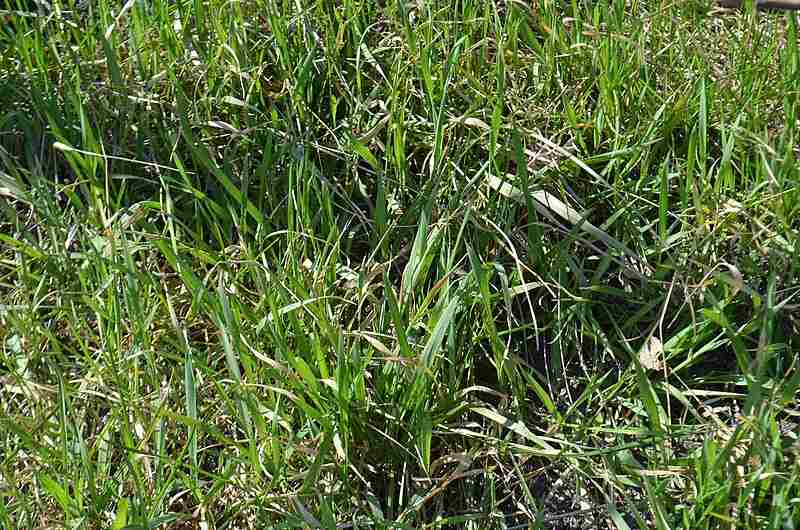
Photo Credit: Ethan2039 / Wikimedia Commons / CC BY-SA 4.0
Kentucky bluegrass, or KBG for short, is a perennial, cool-season grass. It’s often mixed with other grasses like fine fescue and tall fescue in the Piedmont. Kentucky bluegrass is known for its fine texture and ability to recover quickly from damage, while tall fescue helps the grass tolerate drought and heat. Fine fescue is sometimes added for sun-shade lawns.
- Classification: Cool-season grass
- Spreads by: Rhizomes
- Shade tolerance: Low
- Drought tolerance: Moderate
- Foot traffic tolerance: Moderate
- Maintenance needs: Moderate mowing frequency, and high fertilization needs.
- Mowing height: Set mowing height between 2.5 and 3.5 inches.
- Potential for disease: Moderate to high; prone to several diseases, such as dollar spot, leaf spot, necrotic ring spot, summer patch, and stripe smut.
- Soil pH: 6-7.5
- Soil type: Performs best in well-drained, heavy soils with high fertility.
Other notes: A KBG lawn is both beautiful to look at and comfortable for bare feet.
Grass Seed Options:
– Jonathan Green (11970) Blue Panther Kentucky Bluegrass Grass Seed (3 lbs.)
– SeedRanch Midnight Kentucky Bluegrass Seed (5 lbs.)
– Jacklin Seed – Biltmore Blue Blend – 100% Kentucky Bluegrass (5 lbs.)
Perennial Ryegrass (Lolium perenne)
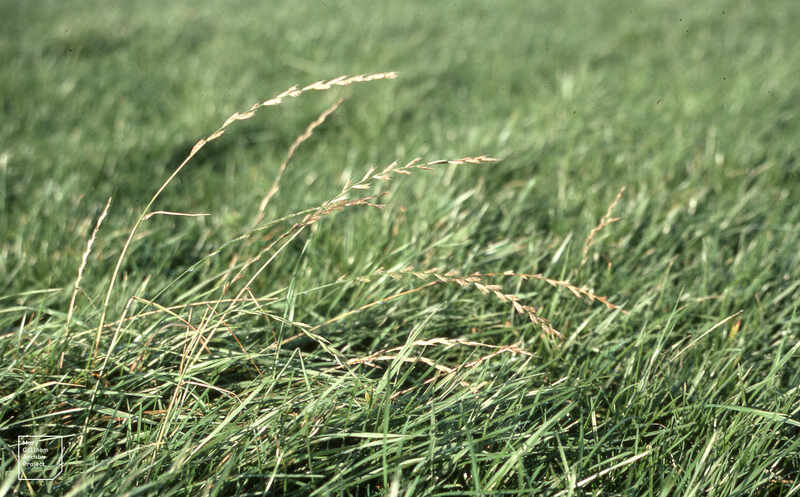
Photo Credit: Dr Mary Gillham Archive Project / Flickr / CC BY 2.0
Perennial ryegrass is a cool-season grass but is not a “stand-alone” grass in the Piedmont. It performs best when mixed with a “partner grass,” such as Kentucky bluegrass. They complement each other because perennial ryegrass germinates faster than Kentucky bluegrass, giving KBG time to spread and fill in damaged areas.
- Classification: Cool-season grass
- Spreads by: Has a bunch-type growth habit
- Shade tolerance: Low
- Drought tolerance: Low
- Foot traffic tolerance: High
- Maintenance needs: Moderate mowing and fertilization requirements. Thatch is insignificant.
- Mowing height: Set mowing height to 1.5 to 2.5 inches
- Potential for disease: High. Common diseases include gray leaf spot, red thread, and leaf spot/melting-out.
- Soil pH: Can grow in soils with a pH between 5 and 8 but prefers between 6 and 7.
- Soil type: Prefers good drainage and fertility but can tolerate some poor drainage.
Other notes: It has shallow roots, which makes it one of the best fast-growing short-term erosion control grass seed.
Grass Seed Options:
– Outsidepride Perennial Ryegrass Seed (5 lbs.)
– Eretz ProTurf Perennial Ryegrass Fine Lawn Seed (choose your size)
4 Warm-Season Grasses
Grasses that thrive in warm weather are known as warm-season grasses. These grasses grow best during the late spring and summer months when temperatures range from 75 to 95 degrees Fahrenheit. During the winter, they become dormant until the warmer weather returns.
Bermudagrass (Cynodon dactylon)
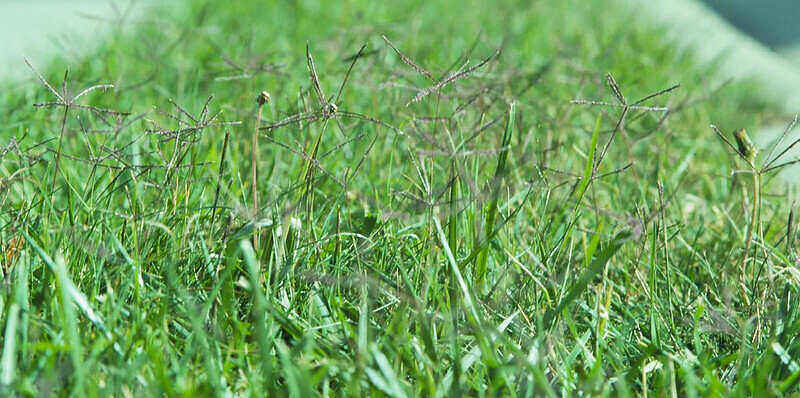
Photo Credit: Matt Levin / Flickr / CC BY-SA 2.0
Despite its name, Bermudagrass did not originate from Bermuda. It is believed to have come from Africa. However, this resilient turf is a good option for high-traffic areas such as backyards where children and pets play. Its durability has also made it a preferred choice for sports fields.
- Classification: Warm-season grass
- Spreads by: Stolons and rhizomes
- Shade tolerance: Low; thrives in full sun
- Drought tolerance: High
- Foot traffic tolerance: High
- Maintenance needs: Needs frequent mowing due to fast growth rate; develops thatch easily; needs regular fertilization
- Mowing height: Set the mowing height between 0.5 and 1.5 inches for hybrid bermudagrass cultivars. Mow common bermudagrass down to 1.5 to 2.5 inches.
- Potential for disease: Good disease resistance, although diseases are common; low resistance to insects
- Soil pH: 6-6.5
- Soil type: Tolerates most soil types
Other notes: Watch that this grass doesn’t creep into your flower beds.
Grass Seed Options:
– Pennington Bermudagrass Bare Spot (5 lb. bag)
– Pennington Smart Seed Bermudagrass Mix (8.75-lb. bag)
– Scotts Turf Builder Bermudagrass (10-lb. bag)
– Hancock Seed Co. Bermudagrass (50-lb. bag)
Centipedegrass (Eremochloa ophiuroides)
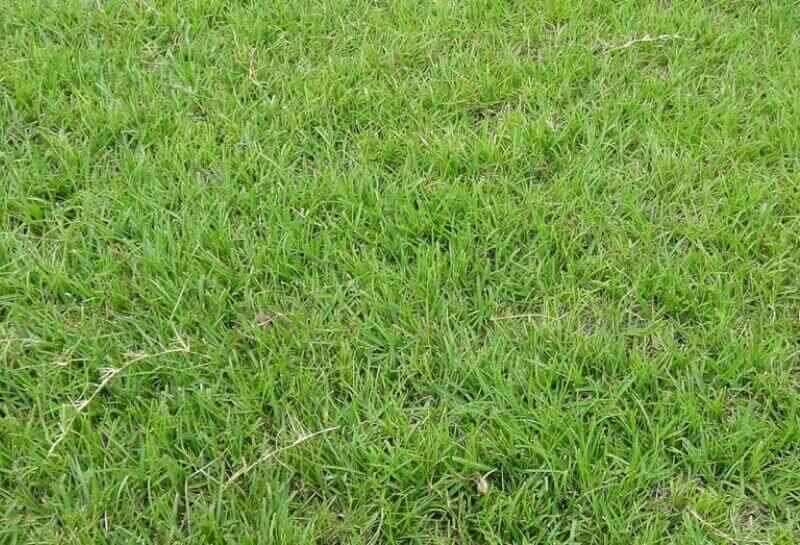
Photo credit: Michael Rivera / Wikimedia Commons / CC BY-SA 4.0
This coarse-textured perennial grass spreads by stolons with a creeping growth habit with short upright stems resembling a centipede — thus, the name centipedegrass. Centipedegrass produces seed and is readily propagated by seed. It has a yellow-green color and is particularly sensitive to iron deficiency.
- Classification: Warm-season grass
- Spreads by: Stolons
- Shade tolerance: Moderate
- Drought tolerance: Moderate
- Foot traffic tolerance: Low
- Maintenance needs: Low. It requires infrequent mowing and 1 to 2 pounds of fertilizer per 1,000 square feet yearly, depending on soil test results. It can also tolerate acidic soil conditions.
- Mowing height: Set the mowing height between 1 and 2 inches.
- Potential for disease: Good resistance to diseases and insects
- Soil pH: 5-6
- Soil type: Acidic, infertile, at least moderately good drainage (very dense, clay soils produce poor results)
Other notes: To determine your soil’s fertilization and nutrient requirements, it’s best to submit a soil sample. Contact your local Cooperative Extension center for details. Lime is rarely needed for centipedegrass. Don’t apply nitrogen before mid-May.
Grass Seed Options:
– Gulf Kist Coated Centipedegrass Seeds (1 lb.)
– Scotts EZ Seed Patch and Repair Centipedegrass (3.75 lbs.)
– TifBlair Centipedegrass (5-lb. bag)
– Pennington Centipedegrass and Mulch (5-lb. bag)
St. Augustinegrass (Stenotaphrum secundatum)
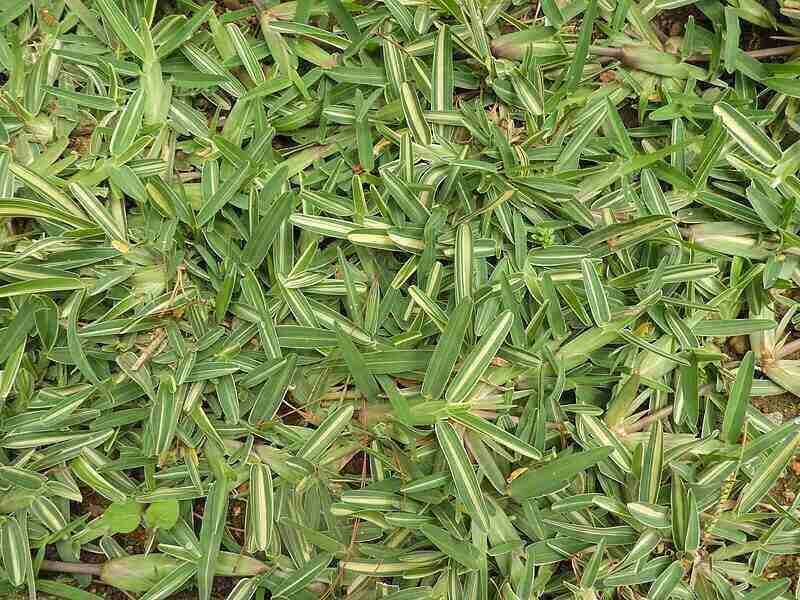
Photo Credit: Yercaud-elango / Wikimedia Commons / CC BY-SA 4.0
St. Augustinegrass is a warm-season turfgrass widely used for its attractive green-blue color. It is known for tolerating salt and adapting to various soil types, making it a popular choice for homeowners and landscapers. However, St. Augustinegrass requires frequent mowing, supplemental irrigation, and regular fertilization.
- Classification: Warm-season grass
- Spreads by: Stolons
- Shade tolerance: Moderate. It is the most shade-tolerant warm-season grass.
- Drought tolerance: Moderate to High
- Foot traffic tolerance: Low
- Maintenance needs: Needs frequent mowing due to fast growth rate; develops thatch easily; needs regular fertilization
- Mowing height: Set the mowing height between 3.5 and 4 inches.
- Potential for disease: Moderate to high
- Soil pH: 6-7.5
- Soil type: Tolerates many soil types; prefers moderately fertile and moist (not waterlogged) soils; doesn’t tolerate soil compaction
Other notes: Even after it’s established, St. Augustinegrass requires supplemental irrigation and regular fertilization. St. Augustinegrass needs about 1 inch of water per week to survive.
Grass Plug Options:
– Seed Ranch St Augustine Seville Grass Plugs (2 Trays)
– Seed Ranch St Augustine Floratam Grass Plugs (2 Trays)
Zoysiagrass (Zoysia sp.)
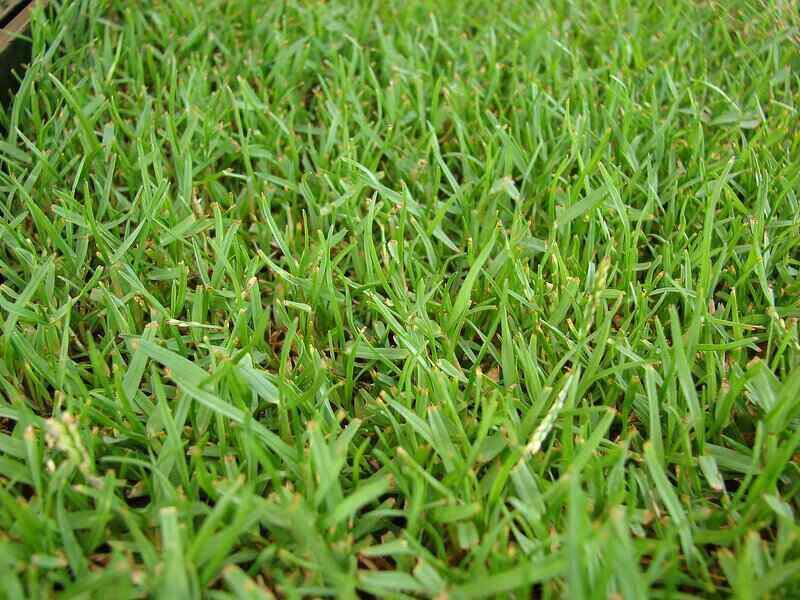
Photo Credit: Forest & Kim Starr / Wikimedia Commons / CC BY 3.0 US
This warm-season grass is a stunning and durable option for your lawn. Its thick, dense growth habit and shade tolerance make it popular. Zoysia also boasts excellent wear resistance. However, it comes with a higher price tag than some other grasses. Due to its slow establishment rate, it’s recommended to be installed only with sod or plugs.
- Classification: Warm-season grass
- Spreads by: Stolons and rhizomes
- Shade tolerance: Moderate
- Drought tolerance: Moderate to High
- Foot traffic tolerance: High, but recovers slowly from damage
- Maintenance needs: Low nitrogen fertilization requirements, although it’s prone to thatch build-up.
- Mowing height: Set mowing height between 1 and 2 inches.
- Potential for disease: Good disease tolerance overall
- Soil pH: 6-6.5
- Soil type: Well-draining, some cultivars more tolerant of a wide range of soils than others
Other notes: One bonus of Zoysiagrass is that it grows at a slower rate than St. Augustine, meaning less frequent mowing for you.
Grass Plug and Seed Options:
– Zoysia Plugs (50 Large Grass Plugs)
– Zoysia Plugs (50 Full & Lush Grass Plugs)
– Zoysia Plugs (100 Plugs)
– Zoysia Emerald Grass Seeds (1/8 lb. of seeds)
– Zenith Zenith Grass Seeds (1/8 lb. of seeds))
How to Choose the Best Grass Type for Your Raleigh Lawn
Is your lawn in full sun most of the day? Are there large trees that create dense shade? Do you have low-lying areas that hold water or areas that dry out quickly? Consider these tips to help you choose the grass that best fits your Raleigh lawn.
Drought Tolerance
To maintain a healthy lawn during drought conditions, choosing a turfgrass variety resistant to drought is crucial. It’s important to remember that some varieties may require more watering than others during these dry periods.
Low drought tolerance: Perennial ryegrass
Moderate drought tolerance: Zoysiagrass, St. Augustinegrass, tall fescue, Kentucky bluegrass, fine fescue, centipedegrass
High drought tolerance: Bermudagrass
Shade Tolerance
When it comes to keeping your lawn healthy, the amount of shade it receives is a key factor. Different grass types have varying shade tolerance levels, so it’s vital to assess whether your lawn is in full sun or if there are large tree canopies creating shade.
Watch how the sun moves over your lawn during different hours. Based on those observations, you can choose the right type of grass for your lawn’s level of sun or shade.
Low shade tolerance: Bermudagrass, Kentucky bluegrass, perennial ryegrass
Moderate shade tolerance: Zoysiagrass, tall fescue, fine fescue, St. Augustinegrass, centipedegrass
Low Maintenance vs. High Maintenance
When it comes to maintaining your lawn, it’s essential to consider your available time and budget. Low-maintenance grasses can thrive with less attention and care, making them a great option for those with limited resources or a busy schedule.
On the other hand, high-maintenance grasses demand regular mowing, fertilizing, and watering, which can be time-consuming and costly.
Low-maintenance grasses: Zoysiagrass, centipedegrass, fine fescues
Moderate to high-maintenance grasses: St. Augustinegrass, tall fescue, Bermudagrass, perennial ryegrass, Kentucky bluegrass
When to Consult a Lawn Care Pro
It’s important to choose the right type of grass to fit your Raleigh lawn’s level of traffic, shade, desired level of maintenance, and soil type. Once you’ve assessed your lawn’s unique needs, follow up with a Lawnstarter lawn care pro who can recommend the best grass type for your Raleigh lawn and keep it trimmed and neat all year.
LawnStarter participates in the Amazon Services LLC Associates Program, an affiliate advertising program. LawnStarter earns revenue from products promoted in this article.
Main Image Credit: James Willamor / Wikimedia Commons / CC BY-SA 3.0
